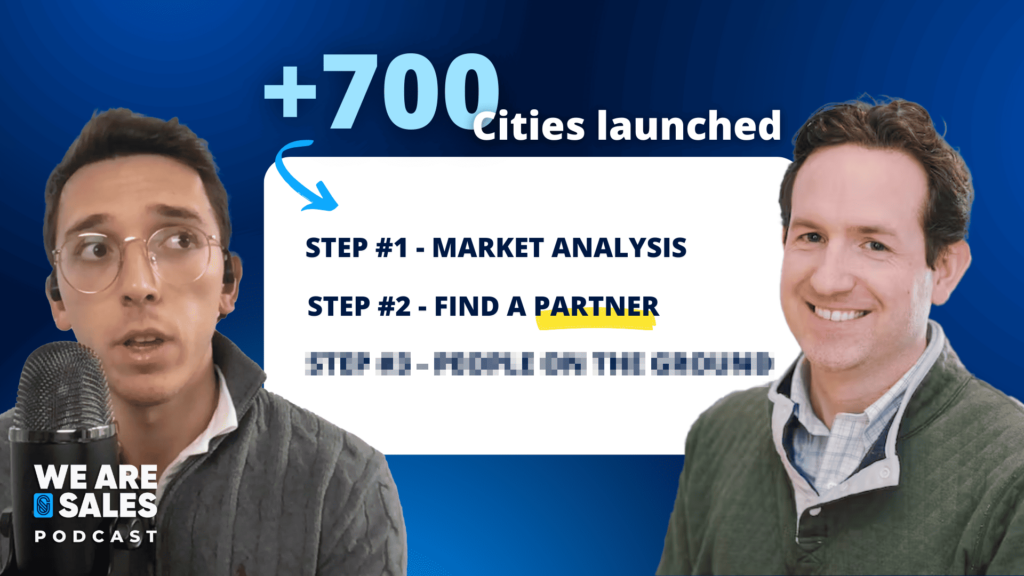Share:
Via’s Market Expansion Playbook

In this article we are sharing the internationalisation playbook of someone who has expanded their business in 40 countries (+700 cities) and has people on the ground in 16 different markets.
This someone is Dillon Twombly, CRO at Via.
Via is a pioneer in transit tech and with its software they’re enabling organisations to digitise their existing transportation networks and launch new and innovative services.
Due to the nature of their business, scaling for Via goes in hand-in-hand with internationalisation. The more cities that are using their technology, the more geographically expanded they are.
Therefore, internationalisation and expanding into new markets have become second nature to Via.
You can listen to our interview with Dillon here, or read along and discover Via’s expansion playbook.
Want more articles like this one directly in your mailbox?
Step #1 – Market Analysis
Before entering any market, the expansion team at Via analyses the markets. This analysis is two folded:
(1) What’s the Total Addressable Market (TAM)?
Among other factors, they look at the following:
- How is transportation run: agencies vs. privatised?
- Avg spend on transportation?
- How robust is the transportation network and does it have capacity constraints?
- How is the employment market of drivers?
The last two aspects are relevant because Via offers complementary services on top of their technology, such as drivers, vehicles, and insurance. So, if there are driver shortages or capacity constraints, these markets become even more attractive.
(2) Ease of entering the market
- Where do they already have some footprint from their B2C business?
- Are there any regulatory limitations, such as where data needs to be stored?
- Can Via do business with the same entity or do they need to create a new one?
- How long is the local sales cycle?
Based on that, some sort of ranking is made.
Step #2: Find a local partner you trust
A transportation network is by definition a very local concept. Therefore, having a localised market entry is not just a nice-to-have, it’s an absolute must-have.
Via’s approach to this is to partner up with a local organisation that knows the market, is familiar with the ecosystem, has a network there and understand the local challenges.
However, what’s even more important is the alignment in goals & objectives:
In any markets there are many players we can work with. So, we look for the partners that have a fit on values and company cultures, but which also align on objectives. This should manifest itself pretty quickly in the agreement that you sign.
Having that alignment from the beginning builds up trust, because you essentially want the same thing. Dillon emphasised this a lot: trust with the partner is crucial. The partner sort of makes or breaks the market entrance.
Step #3 – Do a deal or two before big commitment
Via will always first dip their toes into a new market before going all in. As Dillon explained during the interview:
Studies will rarely match experience on the ground, so we tend to move fast and get that initial exposure. However, we don’t want to make a huge commitment yet. We want to understand how the market works.
Step #4: Formal agreement with partner
If these initial smaller deals were successful, they are happy to move forward and formalise a long-term agreement with the partner.
Here is what “successful” means: there are no regulatory issues and the financial model works for Via as well as for the partner.
Step #5 – LT value assessment
After realising a couple of deployments and once the pipeline reaches a significant size, it’s time to evaluate LT potential: how big is the potential for further expansion? How fast can we move? If there is enough potential, it’s time to put people on the ground.
Step #6 – People on the ground
The team on the ground is composed of a regional lead, who runs both sales & customer success and recruits the local commercial team. This country manager absolutely needs to be a local national, who knows the language, the regulations and preferably joins the company with a relevant network.
These talents are found through their own network or via the help of local recruiters, but there is one important aspect Dillon pointed out:
Regardless of the role you're applying for, you will have multiple cross-functional and cross-country touchpoints, typically ranging from 7 to 9. Given the company's global presence, we consider these touchpoints to be essential in preserving our global company culture.
And just like that, Via is expanding safely, step-by-step, yet, at a high pace into new market.
There is one last quote from Dillon I think is really worth to mention in this article:
Keep the opportunity cost in mind. It’s very easy to put good money after bad. Even if, for example, you have tried to open a market for a year, you have been there 9 times, you have worked through regulatory processes, you can still walk away. The sunk cost fallacy is a tough one to get over.

